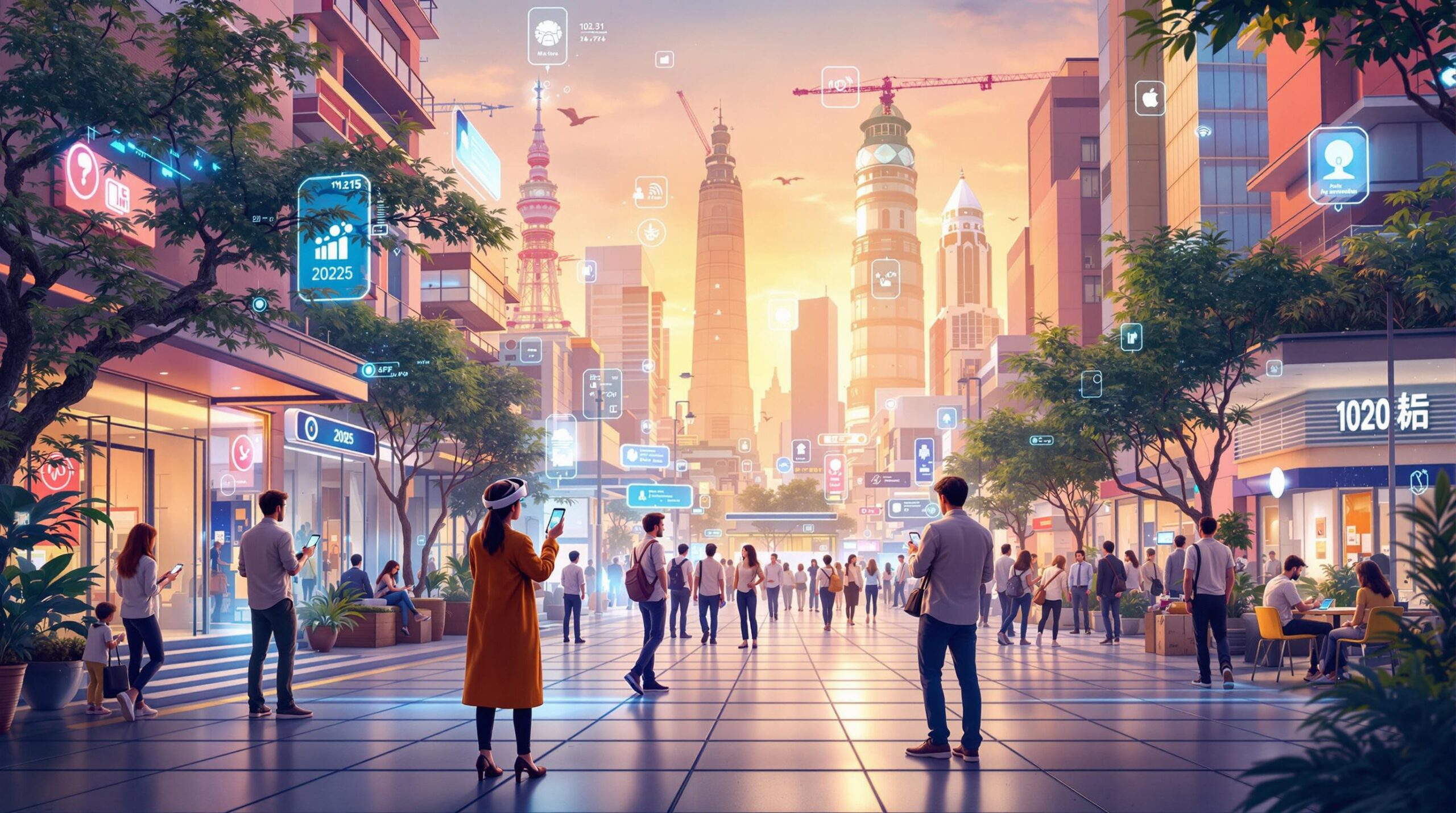
In 2025, mobile apps are transforming industries with cutting-edge technologies like AI, AR/VR, IoT, and advanced security. Here’s what you need to know:
- AI Personalization: 75% of mobile interactions are now AI-driven, boosting user retention by 400%.
- AR/VR Growth: AR enhances shopping and medical training, while VR revolutionizes surgical planning and therapy.
- IoT Connectivity: 75 billion devices are expected to be connected by 2025, reshaping healthcare and smart device management.
- Security Advancements: Blockchain, biometric authentication, and zero-trust models are crucial as mobile threats grow.
| Trend | Impact | Key Example |
|---|---|---|
| AI | Personalized experiences, higher retention | AI-powered healthcare apps for chronic conditions |
| AR/VR | Immersive training and shopping | AR for surgery training, VR for pain management |
| IoT | Real-time monitoring, energy savings | Abbott’s FreeStyle Libre for glucose tracking |
| Security | Enhanced data privacy, user safety | Blockchain in healthcare for secure records |
Mobile apps are no longer just tools – they’re shaping how we live, work, and connect. Read on to explore the details behind these trends.
The Future of Mobile Technology: 6G, AI, AR, and More!
1. AI and Personal User Experience
By 2025, artificial intelligence has transformed how mobile apps interact with users, creating real-time, tailored experiences. AI-driven personalization has been shown to boost user retention by up to 400% and now powers over 75% of mobile interactions.
User Pattern Analysis and Prediction
AI systems gather and analyze user data to improve engagement and offer personalized recommendations. These predictive capabilities have increased conversion rates by up to 40% while cutting user churn by 20%. For instance, major platforms use similar AI techniques to deliver customized content and keep users engaged.
| Data Type | AI Analysis Purpose | Impact on User Experience |
|---|---|---|
| Browsing History | Pattern Recognition | Predictive Content Display |
| App Usage Time | Engagement Analysis | Optimized Feature Access |
| Interaction Patterns | Behavior Prediction | Dynamic Interface Adaptation |
| User Preferences | Personalization | Customized Recommendations |
This level of prediction and personalization is also making waves in specialized fields like healthcare.
AI in Healthcare
AI’s personalized approach is reshaping healthcare delivery. Key applications include:
- Disease Prevention: Using patient data to identify risks and provide early alerts.
- Treatment Optimization: Offering tailored treatment plans based on individual profiles.
- Remote Monitoring: Continuously tracking chronic conditions and making real-time adjustments.
- Cost Efficiency: Streamlining diagnosis and treatment processes.
One example is an advanced AI-powered bolus calculator for type 1 diabetes patients, which has successfully eliminated hypoglycemic episodes. Another innovation is a health screening app that evaluates diabetes risk using just four factors – BMI, age, gender, and family history. Additionally, combining AI insights with clinical expertise has improved diagnostic accuracy for skin cancer lesions by 12%, showcasing how AI complements medical professionals to improve healthcare outcomes.
2. AR/VR Mobile Solutions
Augmented and virtual reality (AR/VR) are changing how mobile applications are used across various industries. The VR training market alone is projected to hit $973.4 billion by 2030. Healthcare, in particular, has embraced these technologies to improve both training and patient outcomes.
Medical Training with AR
AR has transformed medical education by offering interactive and safe training environments. Many medical institutions now use AR to improve procedural training and educate patients. For example, Johnson & Johnson created an AR-based training system for hip surgery. Impressively, 83% of surgeons trained with this system could perform the procedure with little assistance.
| Training Area | Startup Funding | Impact on Healthcare |
|---|---|---|
| Medical Simulations | $7.6 million | Better procedural practice |
| Surgical Planning | $37.1 million | Enhanced visualization |
| Patient Education | $13.4 million | Clearer understanding of treatments |
These AR advancements set the stage for VR to push healthcare innovations even further.
VR Applications in Healthcare
Virtual reality has redefined surgical training and patient care. For instance, Children’s Hospital Los Angeles (CHLA) teamed up with Oculus to create VR simulations for emergency pediatric scenarios, which have since been adopted by 11 more healthcare facilities.
"VR can provide a more immersive and rich experience than traditional 2D applications." – Google Design
MediSim’s VR training center at SRIHER has already trained over 4,000 students. XRHealth offers FDA-approved VR physical therapy, collaborating with companies like ByteDance to provide wellness solutions for employees. AppliedVR’s RelieVRx platform demonstrates VR’s potential in pain management with a 56-session program for chronic lower back pain. Meanwhile, ImmersiveTouch’s surgical planning platform turns patient imaging data into detailed 3D models, improving pre-surgery planning and cutting down operating room time.
sbb-itb-7af2948
3. IoT and Connected Devices
The Internet of Things (IoT) is reshaping how devices connect and interact. By 2023, over 30 billion devices were connected, and that number is projected to soar to 75 billion by 2025.
Health Monitoring Through IoT
IoT has made a big impact on healthcare, especially in patient monitoring. Devices for heart rate tracking now boast accuracy rates of over 90%. Similarly, hand hygiene monitoring systems have cut hospital infection rates by more than 60%.
One standout example is Abbott’s FreeStyle Libre. This system uses non-invasive sensors to provide real-time glucose data directly to patients’ smartphones, eliminating the need for constant finger pricks.
| Monitoring Type | Benefit to Healthcare | Key Metric |
|---|---|---|
| Heart Rate | Tracks vitals in real time | 90%+ accuracy |
| Hand Hygiene | Reduces infections | Over 60% drop in rates |
| Glucose | Enables continuous tracking | Real-time updates |
Smart Device Management
IoT isn’t just about healthcare – it also simplifies managing smart devices. For instance, smart thermostats like Nest help users save 10–12% on heating and 15% on cooling costs. Meanwhile, Philips Hue lighting systems cut energy use by up to 80%.
"In a connected world, the app isn’t just part of the product – it is the product." – Klikaus Endif
But with these advancements come challenges. A staggering 82% of healthcare organizations report IoT-related security breaches. To counter this, robust measures like Zero Trust Architecture and real-time anomaly detection are becoming essential.
The US IoT market is expected to reach $553.92 billion by 2030, growing at a yearly rate of 24.7%. These developments highlight how connected devices are shaping the future of mobile app development.
4. Security and Data Privacy
Mobile app security continues to evolve as threats grow more sophisticated. In Q2 2024 alone, the Kaspersky Security Network blocked 7 million mobile threats. With alternative app stores and direct-to-consumer distribution models gaining traction, robust security measures are becoming increasingly critical. Let’s dive into some of the advanced methods shaping mobile app security today.
Blockchain Security Methods
Blockchain technology is proving to be a game-changer for protecting sensitive data. In 2022, the global blockchain market was valued at $4.8 billion, and it’s expected to skyrocket to $2,334.46 billion by 2032, with an annual growth rate of 85.7%. Healthcare apps, in particular, are leveraging blockchain for enhanced security. For instance:
- Patientory: Uses the PTOYMatrix platform to safeguard medical records while rewarding users for healthy habits.
- BurstIQ: Focuses on encryption and patient-controlled access, significantly lowering data breach risks.
Key blockchain features include:
| Security Feature | Implementation | Impact |
|---|---|---|
| Smart Contracts | Access control | Precise data permissions |
| Decentralization | Distributed storage | Reduced breach risk |
| Cryptographic Techniques | Zero-knowledge rollup | Enhanced privacy |
While blockchain strengthens data security, biometric methods are transforming user authentication.
Biometric Security Features
Biometric authentication is now a cornerstone of app security, especially as breaches become more common. By November 2023, over 100 million medical records had been compromised. Mobile apps are responding by integrating advanced security protocols and adhering to stringent compliance standards.
"The only practical way to ensure secrets are safe is to adopt a dynamic, zero trust security approach. Get them out of your code, and have them delivered only as needed, and only to apps which are verified via attestation."
– George McGregor, VP Marketing, Approov
Some key advancements include:
- Dynamic certificate pinning: Ensures secure app-to-server communications.
- Zero-trust architecture: Limits access to only verified and authenticated users.
The EU’s Cyber Resilience Act (CRA) is also reshaping the digital security landscape. According to Tom Powledge of Verimatrix, it represents a "public commitment to digital trust", aimed at protecting consumers and ensuring market integrity. To comply, organizations must adopt continuous monitoring and automated testing practices. Additionally, the App Defense Alliance (ADA) has introduced the Mobile App Security Assessment (MASA) verification program, enabling developers to earn security review badges for their Google Play listings.
Conclusion: Next Steps for Mobile Apps
Main Points Summary
By 2025, mobile apps are poised to reshape industries like healthcare and technology. The growing use of blockchain highlights a shift toward stronger data security and improved user privacy.
In healthcare, AR/VR tools have shown impressive results. For example, VR has been found to boost procedural knowledge retention by 80% compared to older training methods. Retailers using AR have also seen a 40% increase in conversion rates.
Emerging technologies are driving a more interconnected digital landscape:
| Technology | Current Impact | 2025 Projection |
|---|---|---|
| AR/VR Market | $11.9 billion (2024) | $13.8 billion |
| Mobile Wallet | $12.20 billion (2024) | $88.20 billion (2032) |
| Beacon Technology | $31.61 billion (2026) | $231.36 billion (2031) |
These advancements are setting the stage for mobile apps to transform how users interact with and benefit from digital tools.
Future Development Paths
Looking ahead, mobile app development will focus on multimodal interactions and deeper integration of cutting-edge technologies. Features like voice commands, touch interfaces, and AR tools are reshaping the way apps deliver value to users.
The multimodal UI market is expected to grow at an annual rate of 16.5% from 2024 to 2032. This growth is fueled by a push for more personalized experiences, with 89% of US marketers reporting increased revenue through app personalization.
Key areas to prioritize include:
- AI Integration: Use AI to create personalized experiences while ensuring a balance between automation and human input.
- Enhanced Security: Implement zero-trust security models to safeguard API secrets and user data.
- Cross-Platform Development: Leverage tools that enable smooth deployment across multiple platforms without sacrificing performance.
As the mobile app landscape continues to evolve, particularly in specialized sectors, success will hinge on delivering connected, secure, and user-focused solutions that incorporate the latest technologies.

